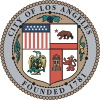
Chinese Americans are Americans of Chinese ancestry. Chinese Americans constitute a subgroup of East Asian Americans which also constitute a subgroup of Asian Americans. Many Chinese Americans have ancestors from mainland China, Hong Kong, Macau, Malaysia, Singapore, Taiwan, as well as other regions that are inhabited by large populations of the Chinese diaspora, especially Southeast Asia and some other countries such as Australia, Canada, France, South Africa, New Zealand, and the United Kingdom. Chinese Americans include Chinese from the China circle and around the world who became naturalized U.S. citizens as well as their natural-born descendants in the United States.
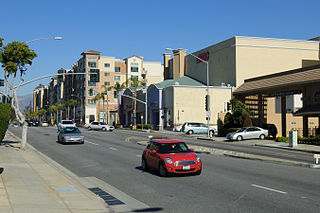
Monterey Park is a city in the western San Gabriel Valley region of Los Angeles County, California, United States, approximately seven miles (11 km) east of the Downtown Los Angeles civic center. It is bordered by Alhambra, East Los Angeles, Montebello and Rosemead. The city's motto is "Pride in the past, Faith in the future".
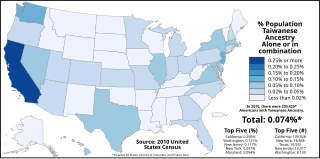
Taiwanese Americans are an ethnic group in the United States consisting of Americans with full or partial ancestry from Taiwan, including American-born citizens descended from Taiwanese migrants.

Vietnamese Americans are Americans of Vietnamese ancestry. They comprise approximately half of all overseas Vietnamese and are the fourth-largest Asian American ethnic group following Chinese Americans, Indian Americans, and Filipino Americans. There are approximately 2.3 million people of Vietnamese descent residing in the U.S. as of 2023.
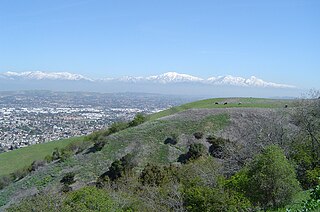
The San Gabriel Valley, often referred to by its initials as SGV, is one of the principal valleys of Southern California, with the city of Los Angeles directly bordering it to the west, and occupying the vast majority of the southeastern part of Los Angeles County. Surrounding landforms and other features include the following:
Frederic Shu Kong Hsieh was a Chinese-born American realtor and investor who "founded" the first Chinese American suburban community of Monterey Park, California by purchasing and reselling plots of abandoned land in the city at premium prices to Chinese investors from Taiwan. In addition, he heavily promoted Monterey Park in newspapers of Hong Kong and Taiwan to encourage prospective Chinese emigrants to move to the city. In the early 1970s, he predicted that the then-predominantly Caucasian city of Monterey Park and the San Gabriel Valley would serve as an anchor for new ethnic Chinese immigrants as an alternative to the old Chinatown in Los Angeles, but it was immediately dismissed and brushed off as mere speculation at the time.

The Asian American influx into the southwestern portion of the San Gabriel Valley region of Los Angeles County, California, grew rapidly when Chinese immigrants began settling in Monterey Park in the 1970s. Just east of the city of Los Angeles, the region has achieved international prominence as a hub of overseas Chinese, or hua qiao. Although Chinese immigrants were a noteworthy presence in the establishment of Southern California from the 19th century, significant Chinese migration to suburban San Gabriel Valley coincided with a trend of white out-migration from the 1970s onward. This opened an opportunity for middle-class Asian Americans to begin settling in the San Gabriel Valley.
Asian immigration to the United States refers to immigration to the United States from part of the continent of Asia, which includes East Asia, South Asia, and Southeast Asia. Asian-origin populations have historically been in the territory that would eventually become the United States since the 16th century. The first major wave of Asian immigration occurred in the late 19th century, primarily in Hawaii and the West Coast. Asian Americans experienced exclusion, and limitations to immigration, by the United States law between 1875 and 1965, and were largely prohibited from naturalization until the 1940s. Since the elimination of Asian exclusion laws and the reform of the immigration system in the Immigration and Nationality Act of 1965, there has been a large increase in the number of immigrants to the United States from Asia.
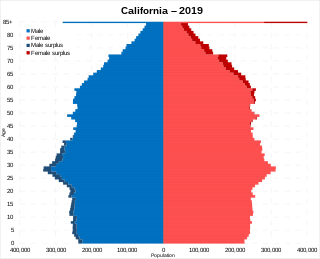
California is the most populous US state, with an estimated population of 38.9 million as of 2023. It has people from a wide variety of ethnic, racial, national, and religious backgrounds.
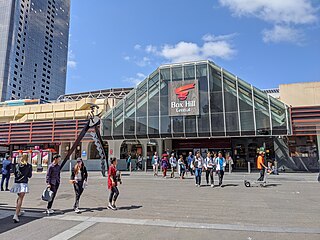
An ethnoburb is a suburban residential and business area with a notable cluster of a particular ethnic minority population, which may or may not be a local majority. That can greatly influence the social geography within the area because of distinct cultural and religious values. Ethnoburbs allow for ethnic minority groups to maintain their traditional identity, forestalling cultural assimilation.

Chinatowns are enclaves of Chinese people outside of China. The first Chinatown in the United States was San Francisco's Chinatown in 1848, and many other Chinatowns were established in the 19th century by the Chinese diaspora on the West Coast. By 1875, Chinatowns had emerged in eastern cities such as New York City, Boston, Pittsburgh, and Philadelphia. The Chinese Exclusion Act of 1882 barred Chinese immigration to the United States, but the Magnuson Act of 1943 repealed it, and the population of Chinatowns began to rise again.

The demographics of Filipino Americans describe a heterogeneous group of people in the United States who trace their ancestry to the Philippines. As of the 2020 census, there were 4.4 million Filipino Americans, including Multiracial Americans who were part-Filipino living in the US. Filipino Americans constitute the third-largest population of Asian Americans, and the largest population of Overseas Filipinos.

Chinese, including Mandarin and Cantonese among other varieties, is the third most-spoken language in the United States, and is mostly spoken within Chinese-American populations and by immigrants or the descendants of immigrants, especially in California and New York. Around 2004, over 2 million Americans spoke varieties of Chinese, with Mandarin becoming increasingly common due to immigration from mainland China and to some extent Taiwan. Within this category, approximately one third of respondents described themselves as speaking Cantonese or Mandarin specifically, with the other two thirds answering "Chinese", despite the lack of mutual intelligibility between different varieties of Chinese. This phenomenon makes it more difficult to readily identify the relative prevalence of any single Chinese language in the United States.
Hong Kong Americans, include Americans who are also Hong Kong residents who identify themselves as Hong Kongers, Americans of Hong Kong ancestry, and also Americans who have Hong Kong parents.
Asian Californians are residents of the state of California who are of Asian ancestry. California has the largest Asian American population in the United States, and second highest proportion of Asian American residents, after Hawaii. As of the 2020 US census, there were over 6 million Asian Americans in California; 15.5% of the state's population. If including those with partial Asian ancestry, this figure is around 17%. This is a jump from 13.8% recorded in 2010.
Taiwan studies, or Taiwanese studies, is a multi-disciplinary academic division of area studies focused on studying Taiwan and the people on/in/of Taiwan both on its own and in comparison with other world areas. Academia Sinica, Taiwan's national level research institute, officially inaugurated its Institute of Taiwan History in 2004 following a long exploratory period beginning in 1986. Taiwan studies departments and centers have been established in numerous universities around the world and key Taiwan studies organizations have been established in North America (NATSA), Europe, and Japan. The first World Congress of Taiwan Studies (WCTS) was hosted by Taiwan's Academia Sinica on April 26–28, 2012, in Taipei, Taiwan.

Historically there has been a population of Chinese Americans in Los Angeles and the Los Angeles Metropolitan Area. As of 2010, there were 393,488 Chinese Americans in Los Angeles County, 4.0% of the county's population, and 66,782 Chinese Americans in the city of Los Angeles.
Hakka Americans, also called American Hakka, are Han people in the United States of Hakka origin, mostly from present-day Guangdong, Fujian, and Taiwan. Many Hakka Americans have connections to Hakka diaspora in Jamaica, the Caribbean, South East Asia, Latin America, and South America. The Han characters for Hakka (客家) literally mean "guest families". Unlike other Han ethnic groups, the Hakkas are not named after a geographical region, e.g. a province, county or city. The Hakkas usually identify with people who speak the Hakka language or share at least some Hakka ancestry. The earliest Hakka immigrants to what is now the United States mostly went to Hawaii, starting when the Kingdom of Hawaii was an independent sovereign state. After the lifting of the Chinese Exclusion Act by the passage of the Magnuson Act in 1943, the Hakka began to come to the US from Taiwan and to a lesser extent Hong Kong, Southeast Asia, Jamaica and the Caribbean.

Hokkien, Hoklo (Holo), and Minnan people are found in the United States. The Hoklo people are a Han Chinese subgroup with ancestral roots in Southern Fujian and Eastern Guangdong, particularly around the modern prefecture-level cities of Quanzhou, Zhangzhou, and Xiamen, along with the Chaoshan region. They are also known by various endonyms, or other related terms such as Hoklo people (河洛儂), Banlam (Minnan) people, Hokkien people or Teochew people (潮州人;Tiê-tsiu-lâng). These people usually also have roots in the Hokkien diaspora in Taiwan, the Philippines, Malaysia, Indonesia, Singapore, Burma, Thailand, Vietnam, and Cambodia.














